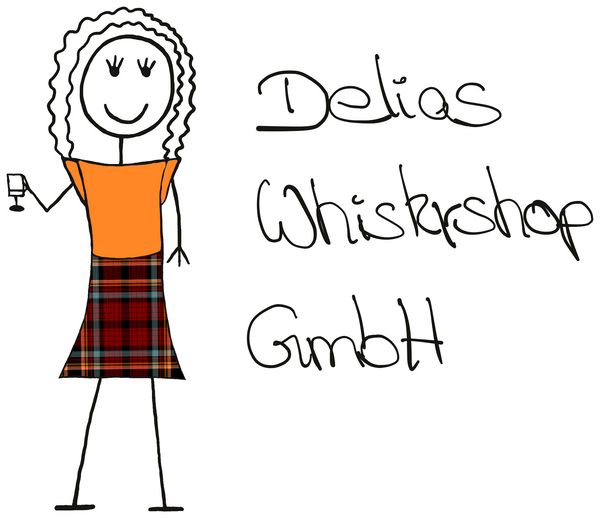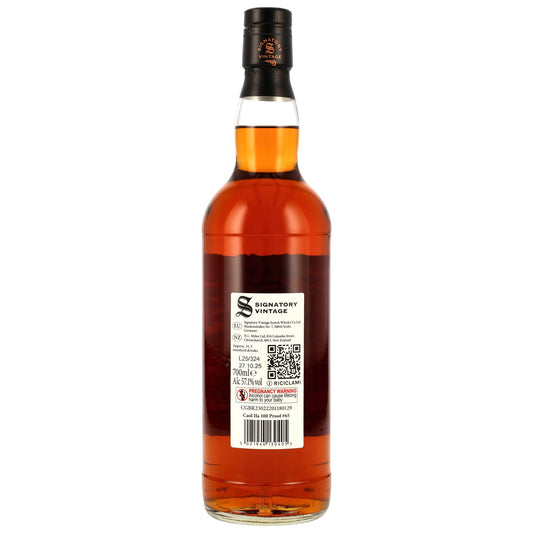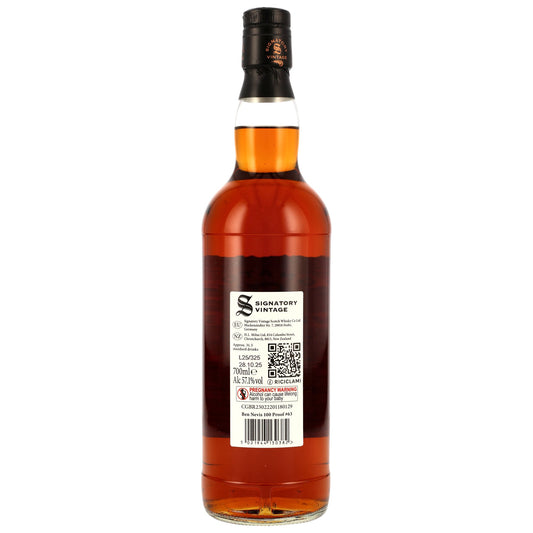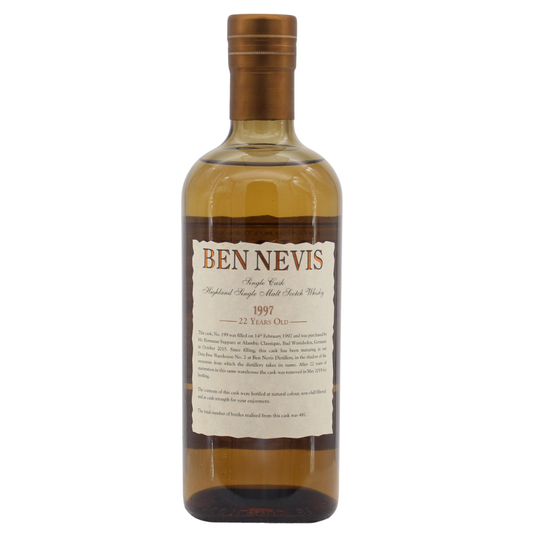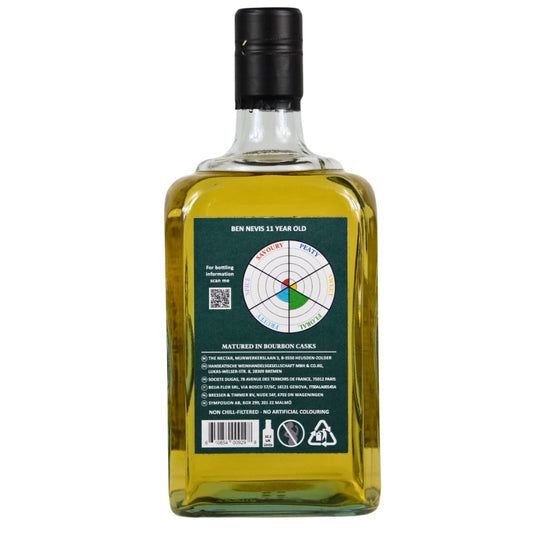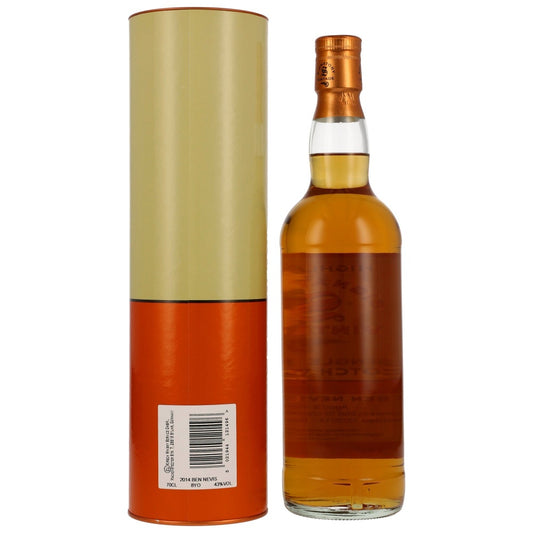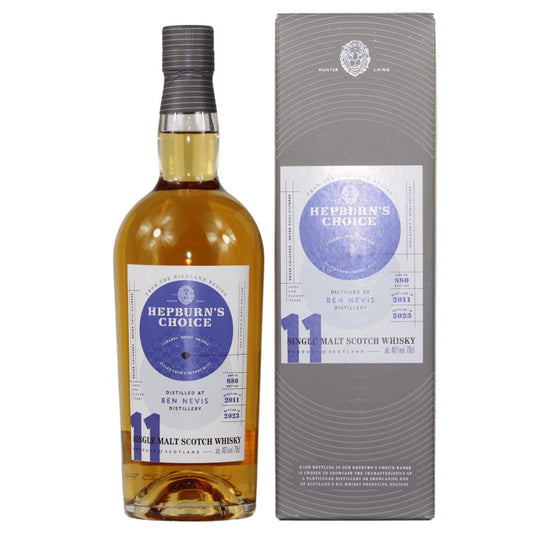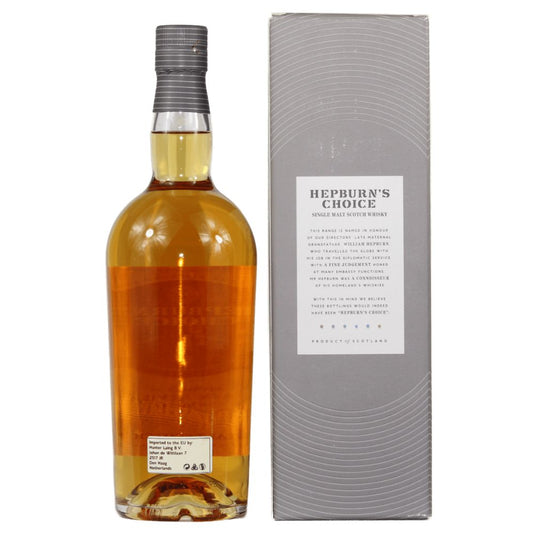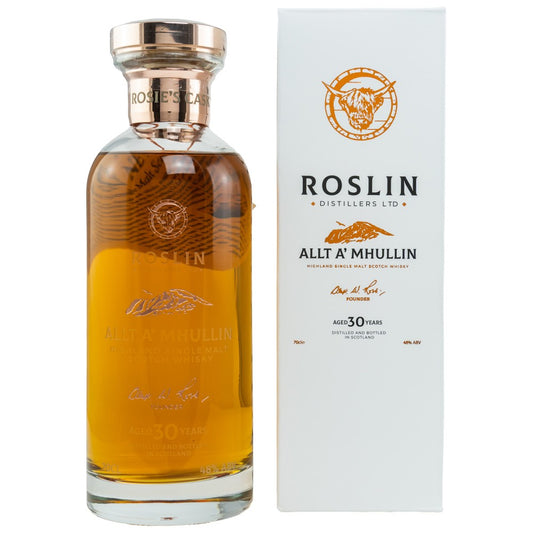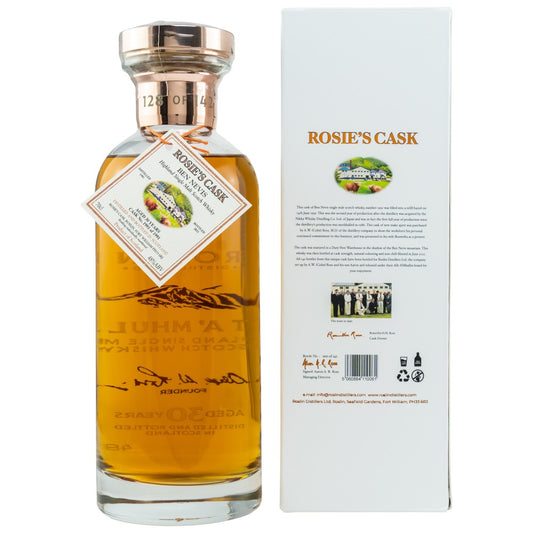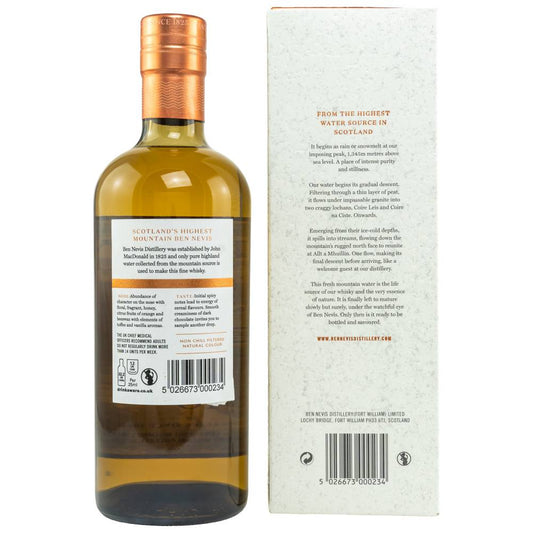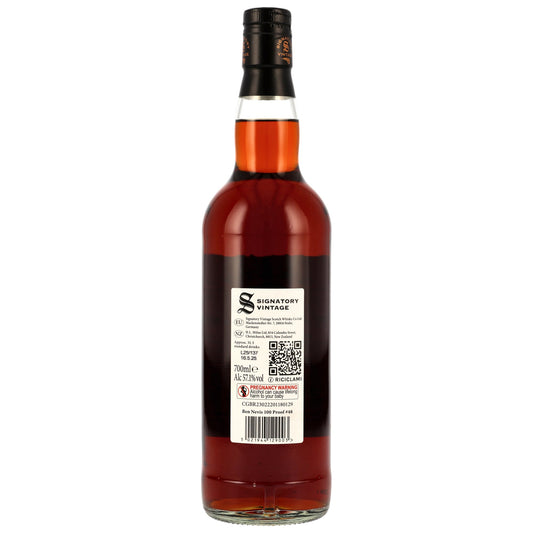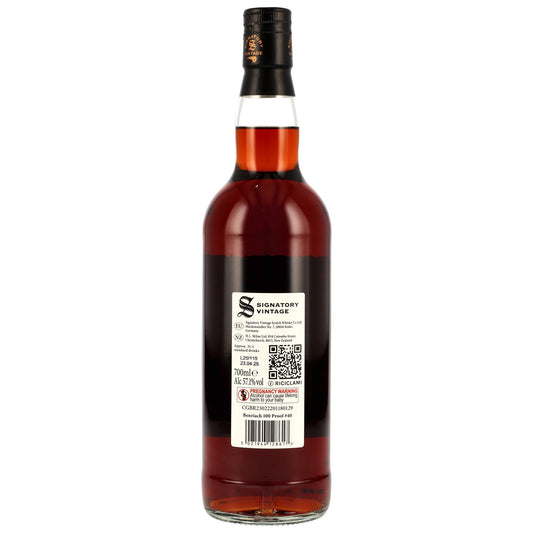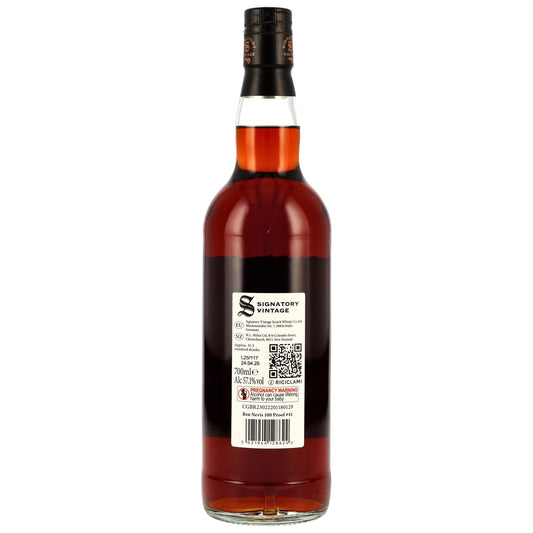-
Caol Ila 12 Year Old 2013/2025 Oloroso Sherry Butts SV 100 Proof Edition #65 57.1% 0.7l
Regular price €49,90 EURRegular priceUnit price €71,29 per l -
Ben Nevis 10 Year Old 2014/2025 PX Sherry Butts SV 100 Proof Edition #63 57.1% 0.7l
Regular price €49,90 EURRegular priceUnit price €71,29 per l -
Ben Nevis 22 years 1997/2019 Sherry Single Cask #199 for Alambic Classique 55.7% 0.7l
Regular price €529,90 EURRegular priceUnit price €757,00 per l -
Ben Nevis 21 Year Old 1998/2019 East Village Whisky 50.3% 0.7l
Regular price €329,90 EURRegular priceUnit price €471,29 per l -
Ben Nevis 23 Years 1995/2019 Whisky-Doris Art Nouveau 52.4% 0.7l
Regular price €349,90 EURRegular priceUnit price €499,86 per l -
Ben Nevis 2012/2024 11 Year Old American Wine Cask #2136 59.4% 0.7l
Regular price €244,90 EURRegular priceUnit price €349,86 per l -
Ben Nevis 1997 27 Years Joint Bottling Zanzibar/TWA (Golf Ladies) 48.7% 0.7l
Regular price €332,90 EURRegular priceUnit price €475,57 per l€349,90 EURSale price €332,90 EURSale -
Ben Nevis 27 Years Delias Christmas Series 2024 53.3% 0.7l
Regular price €349,90 EURRegular priceUnit price €499,86 per l -
Ben Nevis 11 Years Cadenhead August 2024 Collection 46% 0,7l
Regular price €74,90 EURRegular priceUnit price €107,00 per l -
Ben Nevis 8 years 2014/2023 Second Fill Oloroso Sherry Butts SV 43% 0,7l
Regular price €44,90 EURRegular priceUnit price €64,14 per l -
Ben Nevis 11 Years Hepburn's Choice Hunter Laing 46% 0.7l
Regular price €84,90 EURRegular priceUnit price €121,29 per l -
Ben Nevis 30 Years Rosie's Cask #1991 48% 0.7l
Regular price €949,90 EURRegular priceUnit price €1.357,00 per l€999,90 EURSale price €949,90 EURSale -
Ben Nevis 10 Years 46% 0.7l
Regular price €79,90 EURRegular priceUnit price €114,14 per l -
Ben Nevis 28 years 1996/2025 6th Anniversary The Whiskey Jury 48.2% 0.7l
Regular price €399,90 EURRegular priceUnit price €571,29 per l -
Ben Nevis 26 years 1996/2023 Single Cask #01 for Alambic Classique 54.7% 0.7l
Regular price €579,90 EURRegular priceUnit price €828,43 per l -
Ben Nevis 11 years 2014/2025 Crazy Coos Reloaded 7- 1st Fill Oloroso Sherry Cask #189 Caskhound 58.5% 0.7l
Regular price €67,90 EURRegular priceUnit price €97,00 per l -
Ben Nevis 9 Year Old 2015/2025 Oloroso Sherry Butts SV 100 Proof Edition #48 57.1% 0.7l
Regular price €49,90 EURRegular priceUnit price €71,29 per l -

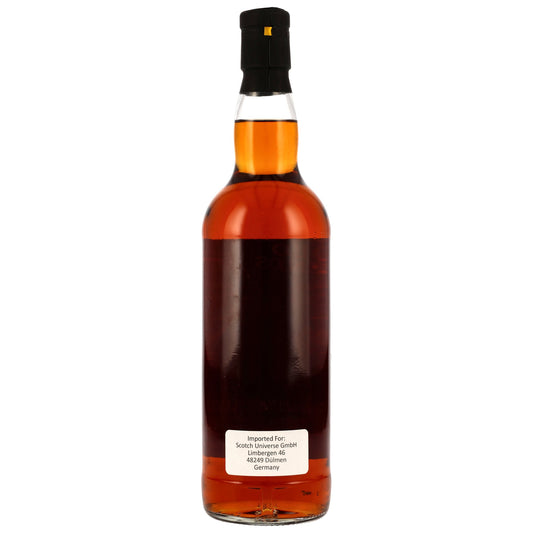
Ben Nevis 8 years 2017/2025 Cote de Beaune Wine Barrique The Old Friends 54.8% 0.7l
Regular price €67,90 EURRegular priceUnit price €97,00 per l -
Benriach 10 years 2014/2025 SV 100 Proof Edition #40 57.1% 0.7
Regular price €49,90 EURRegular priceUnit price €71,29 per l -
Ben Nevis 9 Year Old 2015/2025 SV 100 Proof Edition #41 57.1% 0.7l
Regular price €49,90 EURRegular priceUnit price €71,29 per l



